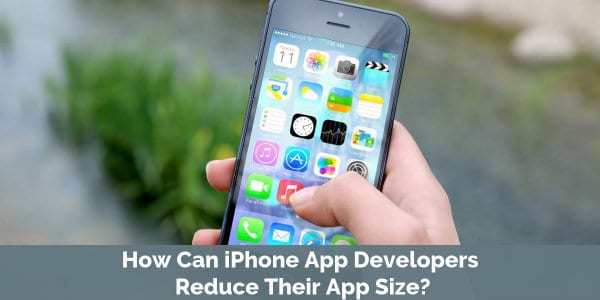Internal space of an iPhone device plays a vital role in the whole mobile app installation process as the smartphone app size directly correlates with the internal space of the iPhone.
If you have more internal space in your iPhone, then you can download more mobile apps. But if there is a limitation of space, for example, someone with a 16GB iPhone will feel that his phone’s internal space is insufficient. It happens because approximately
These are the following steps used for asset slicing.
- First of all, you have to specify your target devices and after that, you have to create multiple resolutions for all the images.You must use the asset catalog for resources which is to be sliced.
- Now you have to run this mobile app on the simulator or a device. Xcode builds a variant of the iPhone app for a particular device which you have chosen. It improves the debug time and allows you to test the variants locally.
- Now create an archive of the app and upload it to iTunes connect. At iTunes connect, first distribute the pre-release version of your iPhone app so that testers will install this pre-released version on all supported devices by using TestFlight.
- Now you could release the full version of the app. Users can download the full version of app from the iTunes store.
#2. Bitcode:
Bitcode is the intermediate representation of the code. This is the step in which code will be compiled and thus, the app will link to iTunes. This bitcode will allow you to re-optimize your iPhone app in future without the need of re-submission of a new version. You could also make changes in existing app.
#3. On-Demand Resources:
On-Demand resources are the tags which are a great way to minimize your app size. This way is very beneficial for large size mobile applications.
How On-Demand resources work:
You could understand on demand resources by the fact that a tag is required to represent a resource, you have to assign a tag to each resource during the app development process. You could take a tag as the string identifier. You have to use the name of the tag as a resource identifier.

On demand resources Image source: Apple
There are 3 types of On-Demand resources described as follows:
- Install initial tags : These are the initial tags that are necessary for the smartphone app to run.
- Prefetch tags: These tags will be downloaded during the first run of the iPhone applications.
- Download only On-Demand resources: These tags will be called on certain conditions. The first step in On Demand resources is tagging, resources are downloaded by the app via their tag.
Benefits of On-Demand resources:
- You can reduce the size of your iPhone app: It reduces the iPhone application size and thus improves the download speed for the user.
- App resources are only used when required: The resources are requested when the iPhone app entered into a certain step. For example, a game has many levels but if you want to reach to a particular stage then the app will call a resource for that particular level or next level.
- Provides a remote storage for resources that are rarely used: Each iPhone app has such resources which are used less frequently. For example, an app tutorial which is shown to a user only once when the user opens the app at the first time and it will never appear again.
- Provides a remote space for in-app purchase resources: Sometimes an iOS app offers the in-app purchases that include additional resources. For example, a user purchases a pack (additional resource) of coins when playing Subway surfer. These coins pack will only be requested after the app installation.
Conclusion:
Many times Apple device users suffer because of small storage, thus, it becomes a priority task for an iPhone applications developer to reduce the app size by applying the whole app thinning process. This process improves your mobile app quality, mobile app engagement etc. In the end, you are able to create iPhone apps which use the most Apple device features, consume minimum storage and accommodate future app updates.
Image: User’s Own


